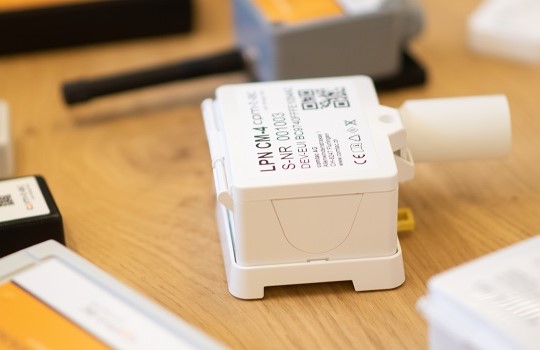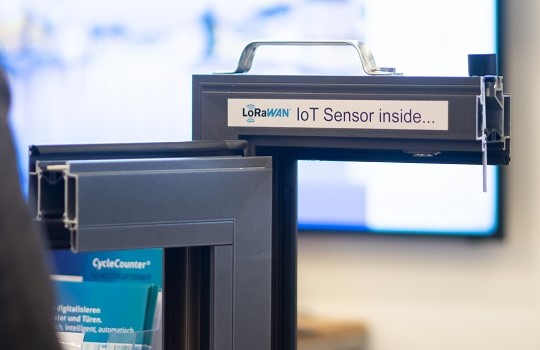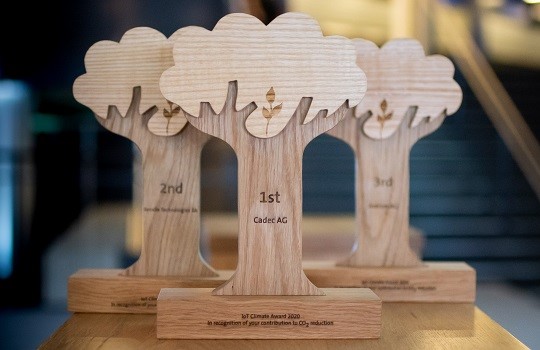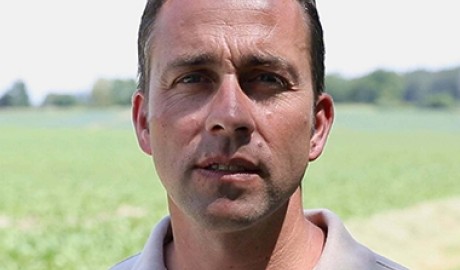IoT
The global climate crisis: how can IoT help?
Careful, sustainable handling of natural resources is more important than ever. Protecting the natural environment is the responsibility of companies as well as individuals. Studies show that ICT technologies, particularly IoT, have huge potential in the fight against climate change, as well as paving the way for sustainable innovation and novel business models.
Text: Martina Longo, Images: Swisscom, unsplash,
Biggest potential in the ICT sector
The ICT sector offers the best prospects for a successful and effective reduction in CO2 emissions. Research undertaken by the Federal Institute of Technology (ETH) in Zurich has shown that the sector can make a significant contribution to a greener future. By 2025, this could prevent the emission of over two and a half times the CO2 produced by the industry itself through the manufacture, operation and disposal of equipment and infrastructure.
Intelligent applications within the efficient mobility sector provide the most significant potential for CO2 savings. Logistics, traffic management and traffic optimisation systems are particularly promising, alongside smart buildings and power management technologies. The use of IoT applications, and the resulting automation, not only leads to more efficient processes but also saves CO2 as an indirect consequence. Let us therefore consider which IoT applications make companies greener and where they can be deployed.

Conserving resources means using smart sensors
Not all IoT applications will inevitably result in a negative carbon footprint. Nevertheless, smart IoT solutions can empower companies to use natural resources in a sustainable and efficient way, making them enablers of environmental protection. A range of applications can be used to suit different business models.
In many cases, sustainable IoT applications are based on networked smart sensors designed to transform their surroundings into measurable data that they analyse to deliver potential improvements in energy management. One example is the use of remotely managed smart sensors to monitor levels in oil, gas or heating tanks. Sensors can measure, assess and regulate the temperature inside buildings. When the inside temperature drops – such as when it's snowing outside – rooms can be heated with precision to the required temperature. Engineers or home owners are informed remotely about the change in temperature, which enables them to use an app to maintain the building at a comfortable temperature.

In the long term, this automated monitoring and regulation reduces the use of heating oil and minimises CO2 emissions. The ability to remotely regulate building and room temperature further reduces pollution by removing the need to travel to the building, thereby avoiding vehicle emissions.
IoT applications are increasingly used in the mobility and logistics sectors in particular. These small digital assistants are used wherever accurate readings will improve the pathways between gas and oil tanks and the supply depot. This means that oil or gas need only be delivered when tank levels fall below the required level, saving fuel and the transport costs, which will ultimately lead to reduced CO2 emissions over the longer term.
IoT Climate Award

Swisscom recognises companies that demonstrate commitment to the sustainable use of resources and contribute to climate protection. The inaugural IoT Climate Award was presented to three innovative companies at the IoT Day 2020 held on 21 January 2020.
Technology for tomorrow's natural world
Connecting people, machines and the environment through IoT technology will become even more important in the future. Applications will encompass automated parking systems, smart waste and facility management – and even smart farming. Ongoing research projects indicate that new IoT technologies will not only revolutionise the agricultural industry, but also have the potential to massively reduce greenhouse gas emissions across the entire production and food chain. Farmers are already making use of IoT technologies today to monitor weather conditions, crop growth and soil condition or to track grazing livestock. This deployment of IoT applications clearly demonstrates the positive impact of smart applications on the natural environment. New technologies can also lead to greater efficiency, as in the case of Reto Minder, a vegetable grower from Jeuss (FR), who reduced his water consumption by 50% thanks to IoT sensors, while maintaining a steady income.
Are you ready for an innovative, sustainable future?
To ensure that IoT applications make a real difference to your carbon footprint, sustainability needs to be incorporated into services and products at the research and development phase.
Our IoT specialists would be delighted to show you how IoT can make your company more environmentally friendly in a free consultation. Arrange a free appointment now.
The technology behind sustainable networks
LPN LoRaWAN: IoT sensors efficiently transmit minuscule data volumes over huge distances on this Low Power Network. The network already covers 93.7% of the Swiss population and is being constantly expanded thanks to our extensive partner network.
NB-IoT: Narrowband IoT offers effective building penetration and is therefore particularly suitable for IoT applications in difficult-to-reach locations, such as basements, below ground or in remote areas of buildings.
LTE-M: Long Term Evolutions for Machines, or LTE-M, offers excellent data transfer scalability and guarantees full mobility and mobile phone cell handover (for non-static applications), with optional voice functionality. It is therefore suitable for IoT applications in the automotive and transport sectors, such as driverless cars.
Want to find out more about IoT technology? Learn how devices are networked in the white paper:

Newsletter
Would you like to regularly receive interesting articles and whitepapers on current ICT topics?
More on the topic:


